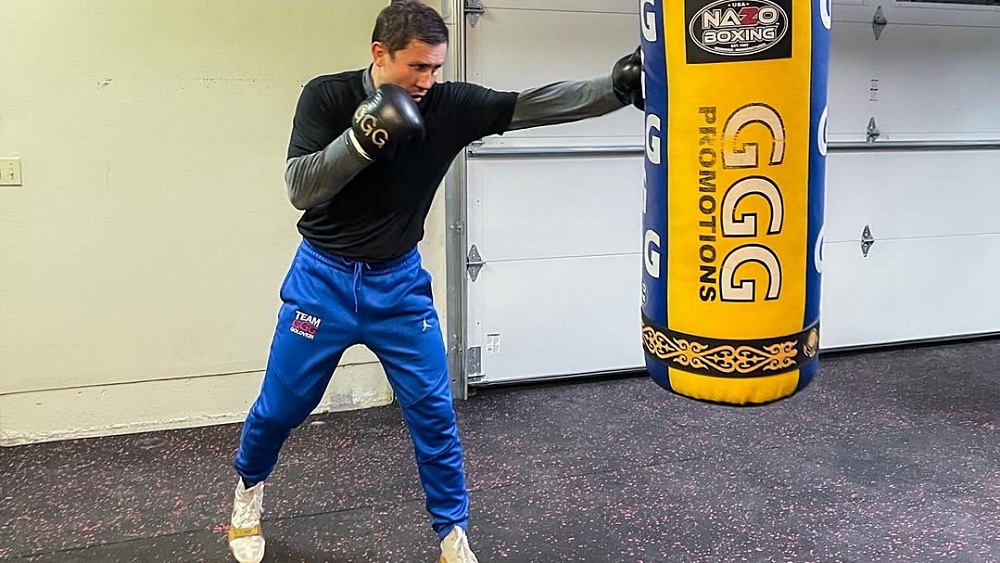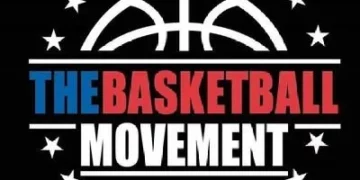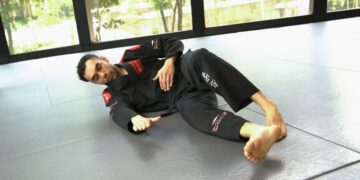Whether you are training at a local martial arts gym in Singapore training Boxing, Muay Thai, MMA or anywhere else, you will always hear one word repeated, footwork. Why is that? Well, you can have knockout power, slick submissions, and an iron chin, but without solid footwork, you’re always one step behind.
Footwork is the hidden language of martial arts. It’s how fighters create space, close distance, manage angles, and control the rhythm of a fight. You might not notice it right away, especially when the action is fast and furious, but behind every clean strike or takedown, there’s usually a smart movement that made it possible.
Let’s unpack why footwork matters and why mastering it is never just a beginner’s task.
Footwork Is More Than Just “Moving Around”

In martial arts, footwork isn’t just movement—it’s strategy, balance, and control that lets you attack, escape, and reset on your terms.
People often think of footwork as simple stepping or circling. But in martial arts, every step has a purpose. Good footwork keeps you balanced, mobile, and efficient. It allows you to hit without being hit. to retreat without panicking and to reset and re-engage on your terms.
Whether it’s Muay Thai, boxing, Brazilian Jiu-Jitsu, or MMA, movement is a huge part of the strategy. It’s not just about where you’re going, it’s why you’re going there.
Striking: Controlling Range And Angles
In striking arts like boxing or Muay Thai, footwork is the tool you use to control distance. Staying just out of reach while still being close enough to fire back takes timing and legs.
Ever wonder how high-level fighters seem to “vanish” just as a punch comes their way? That’s not magic. That’s timing, angle changes, and subtle weight shifts through the feet. Fighters use pivots, shifts, and step-outs to avoid damage and counter with precision.
Muay Thai adds another layer because of the clinch. Good footwork in the clinch helps with balance, off-balancing your opponent, and controlling posture. You can’t dominate the clinch without a solid base and foot positioning.
Grappling: Position Before Submission
In BJJ and wrestling, footwork looks different, but it’s just as important. It’s how you enter for takedowns, create leverage, or escape bad positions. On the ground, it’s about hip movement and foot placement, not just upper-body strength.
Even in scramble-heavy moments, subtle steps and knee slides make all the difference. A poorly placed foot can mean getting swept or worse, submitted.
The phrase “position before submission” isn’t just a saying; it’s a blueprint that all grapplers follow. And footwork is how you follow it.
MMA: Where Footwork Becomes Survival
MMA blends it all together. You’re striking one second, grappling the next. Your footwork needs to be adaptable.
In MMA, smart movement helps you manage range, defend takedowns, and create exit routes under pressure. Fighters who master transitional footwork, the kind that connects striking to wrestling or resets after a scramble, often have a huge advantage against their opponent.
It’s also one of the easiest skills to neglect. But the ones who put in the reps, ladder drills, shadowboxing with intent, cage work, they’re the ones who always seem shine in key moments.
It’s A Skill That Ages Well
Here’s the beautiful thing about footwork: it’s not just for the young or explosive. Fighters with experience often rely more on positioning than speed.
Think of legends like Muhammad Ali and Vasyl Lomachenko who stayed competitive well into their late 30s. They weren’t outmuscling people. They were placing themselves in the right spot, over and over again. That’s footwork.
It’s one of the few physical attributes that improve with time, provided you’re paying attention.
How To Get Better At Footwork
Improving your footwork isn’t just about doing more cardio or sprinting till your legs give out. Sure, general fitness helps, but real improvement comes from being intentional.
This isn’t just about moving more. It’s about moving smarter.
1) Shadowbox With Purpose, Not Just Punches
A lot of people shadowbox like they’re shadow-punching, throwing combos with zero thought to foot position. But good shadowboxing isn’t just what you throw with your hands; it’s where your feet take you between each strike. Shadowboxing helps you visualize the attacks your opponent might throw and gives you a chance to plan your counters or find a way out.
Try this: shadowbox a full round using only footwork. No punches. Just focus on movements. Forward, backward, angles, pivots. Feel the rhythm, then slowly add in strikes that flow from the movement, not in spite of it. You’ll start to notice how much more balanced and ready you feel after each exchange.
2) Drill Pivots, Angle Changes, And Lateral Steps
Repetition builds instinct. Just like you’d rep an armbar or a jab–cross, footwork drills need reps.
Work on:
- Pivots (off the lead and rear foot): Crucial for getting off the centerline and resetting your position after an exchange.
- Lateral Movement: Shuffle steps or pendulum steps to maintain range without walking into strikes.
- Angle Exits: Step out at 45 degrees after a combo and watch how much safer, and more dangerous you suddenly feel.
Start slow. Speed comes later. It’s about wiring the patterns into your muscle memory.
3) Spar Light With A Focus On Movement, Not Winning
Sparring is where most people either panic or power through. But light sparring gives you room to experiment, and great footwork requires experimentation.
Treat light sparring like chess. Don’t chase power. Chase position. Try circling out of bad spots and setting traps with lateral steps. Notice when you’re flat-footed or crossing your feet. The more awareness you build, the less correction you’ll need later.
And if your gym allows, spar a few rounds each week where your only goal is “don’t get touched”, just using movement and head movements and no strikes. You’ll be shocked at how fast your awareness improves.
4) Study Fights With Your Eyes On The Feet
Everyone watches highlight reels for the knockouts. But watch a full round and ignore the hands. Track the feet. Where are they going? How are they setting traps? When does a fighter circle versus pivot? When do they shift stances or drop their weight?
Watch fighters known for elite footwork: think Rodtang’s pressure control, Superlek’s timing, or in boxing, someone like Lomachenko or Usyk. You’ll start seeing patterns: how they use subtle shifts to break rhythm, how they steal inches to land clean shots.
Then bring those patterns to your own training. Copy what works, leave what doesn’t and make it your own.
5) Build The Engine Behind It
Lastly, don’t forget, good footwork still requires strong legs. Basic conditioning matters. Ladder drills, cone work, skipping rope, they build the quick-twitch responses and leg endurance needed to stay mobile over multiple rounds.
But don’t get stuck doing drills blindly. Always ask yourself: How does this help me move better in a fight?
When It Clicks, Everything Changes
At first, it’ll feel awkward. You’ll overstep, stumble, or get stuck in place. But as you progress, your feet will start reacting before you think. You’ll be in the right place without forcing it. And suddenly, everything feels smoother, your strikes land cleaner, your defense tightens up, and your energy lasts longer.
That’s when you’ll know: you’ve stopped just training footwork and started owning it.
Final Thought
You can’t control the fight if you can’t control where you are. That’s the simple truth behind footwork. It’s the foundation, quiet, often overlooked, but always present.
So next time you train, pay attention to your feet. They might be telling you something your hands aren’t.
You may also like:
The Influence Of Dutch Kickboxing On Modern Muay Thai Fighters
It usually starts as a joke. You’re in boxing class, working the pads, and the coach calls out, “Alright, switch stance!” You awkwardly shift your right foot forward. You feel like a baby deer. Nothing…
Tennis balls aren’t just for tennis players. They’re also a valuable tool for boxers looking to enhance their agility, coordination, and reflexes. Incorporating tennis ball drills into your boxing training regimen can significantly improve your…
High-intensity interval training (HIIT) alternates all-out efforts with brief rest or low-intensity periods. Unlike steady-state cardio, HIIT exercises, martial arts such as Muay Thai, and some aspects of BJJ, pushes you into anaerobic zones. Think…
Feeling a little anxious heading into your first sparring session in martial arts is perfectly normal. You’ve never had the chance to test your skills against resisting opponents, and you’re unsure about how well you’ll…
The cross is one of the most powerful punches in a boxer’s arsenal, and it also covers more distance than every other type of punch besides the jab. It’s an outside range weapon that can…
In striking arts, size and reach are important tools, but they don’t guarantee success. When facing a smaller opponent, the challenge often lies in their speed, mobility, and ability to slip into range before you…
Trying something new without knowing what to expect can feel intimidating. Whether it’s a new job, a change in routine, or something completely different like learning a martial art. Out of all the styles available,…
When people think of MMA, they usually picture the highlight moments, explosive knockouts, slick submissions, and last-minute comebacks. What they don’t see is the hard work and engine underneath all of it: conditioning. Conditioning is…
Not many Muay Thai fighters compete at the highest level well into their late 30s. Even fewer manage to stay on the edge. Nong-O Hama is one of the rare exceptions. Since making his debut…
When Craig Jones announced the first-ever CJI early last year, most of the Brazilian Jiu-Jitsu and Submission Grappling world thought, “No way he pulls this off.” Then he did. $1 million to the winner, every…
There was no spotlight speech. No drawn-out farewell. Just a man who had given everything to his craft, stepping off the mat for the last time and leaving his black belt behind in Brazilian Jiu-Jitsu….
Trying to get back into shape after a lengthy break often feels like you’re trying to climb Mount Everest in flip-flops. Little things, like trying to tie your shoelaces, can make you out of breath,…





































